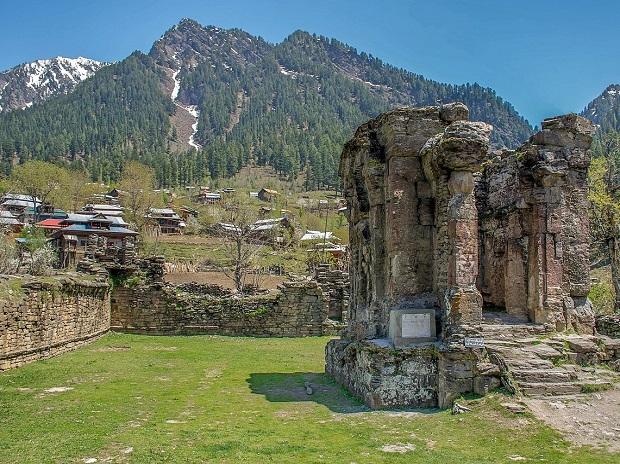
Kashmir, the land of Sharada (Goddess Saraswati), was the seat of Hindu knowledge tradition. It was considered to be the Sarvajna Peeth. It was not in Varanasi where Shankaracharya ascended the throne of ‘Master of all Knowledge’. Kashmir had been the melting pot of all Indic philosophical traditions – Shaiva, Vaishnava, Nyaya, Sidha, Tantra, Boudha and Jaina. Being a repository of Indic knowledge systems poetics, aesthetics, dramatology and historiography – all flourished in the serene Valley of Kashmir.
All these knowledge systems found their fullest expression in the works of Acharya Abhinavagupta. In my opinion, Abhinavagupta can also be considered as the meeting point – a point where all streams of knowledge systems merged beautifully and harmoniously. Abhinavagupta’s disciples were drawn from different parts of the country and scholars from the length and breadth of the nation drew inspiration from his ideas. He represents the intermingling and integration of various streams of Indian thought. The beauty and strength of Hindutva philosophy is quite obvious in Acharya’s teachings. He appreciated and promoted all paths. Never argued that ‘my path’ alone is correct – he was never an ‘Onlyist’.
In his Magnus opus Tantraloka, Acharya stated that approach unequivocally.
“Loukikam vaidikam saamkhyam yogaadi paancharaatrikam |
Boudhaarhatanyaayasaasthram padaarthakramatantranam ||
Sidhaanthatantrasaaaktha sarvam brahmOdbhavam yatha: |
Sriiswachhandaatishu proktam sadyojaataadibhedata: || (Tantralok, 35.26-27)
This Means all philosophies like Loukik, Vaidik, Saamkhya, Yoga and Paancharaatra, Boudh, Jain (Arhat), Nyayasastra, Padaarddha krama tantra, Siddhaanta Tantra, Saktha are produced from Siva’s mouth with slight variations. Hence all are authentic. Thus spake scriptures like Swachhanda.
According to him, difference of opinions and squabbles are created only because of ignorance. So the extreme positions taken because of difference and animosity are to be considered as confused and enamoured state of mind. Acharya says that the knowledge streams represent in detail a specific side of the total wisdom but the ignorant and confused followers consider the specific part as complete knowledge.
In this way, he tried to synthesise the different streams. That was continued by his students like Kshemaraja and others. Kshemaraja was the person who coined the idea that Tathagat Buddha — an incarnation of Vishnu. This was an attempt to assimilate and unify the two streams by emphasising on commonalities. This assimilating, inclusive and unifying spirit of Kashmir is the ‘real Kashmiriyat’ — not the ‘phoney Kashmiriyat’, which is intolerant and exclusivist. We need to recapture the real Kashmiriyat.
Unfortunately, these attempts were stalled due to the complete transformation of the socio-cultural dynamics of Jammu Kashmir by 12th century. Continuous invasions and destruction of great knowledge centres of Kashmir, specifically Abhinavagupta’s schools and libraries, proved detrimental to this harmonising philosophical endeavours. There started problems, internal squabbles. It widened the gap between different Hindu belief systems. Semiticisation of Bharatiya paths led to the animosity between Hindu and Buddha methods. Some groups with vested interests had also tried to develop Hindu-Buddha binaries. There was no effort to control the damage. This, plus absence of personalities who matched Abhinavagupta in stature and vision had contributed to the widening of the gap, leaving no scope for mingling.
Courtesy: IndusScrolls

More Stories
‘Tippu NijaSwarupam’ Book Launch event organised in Hyderabad
Muslim cleric from AP calls for assassination of PM Modi and Amit Shah
Kerala Church Rebels Against New Worship Method Mandated by Pope